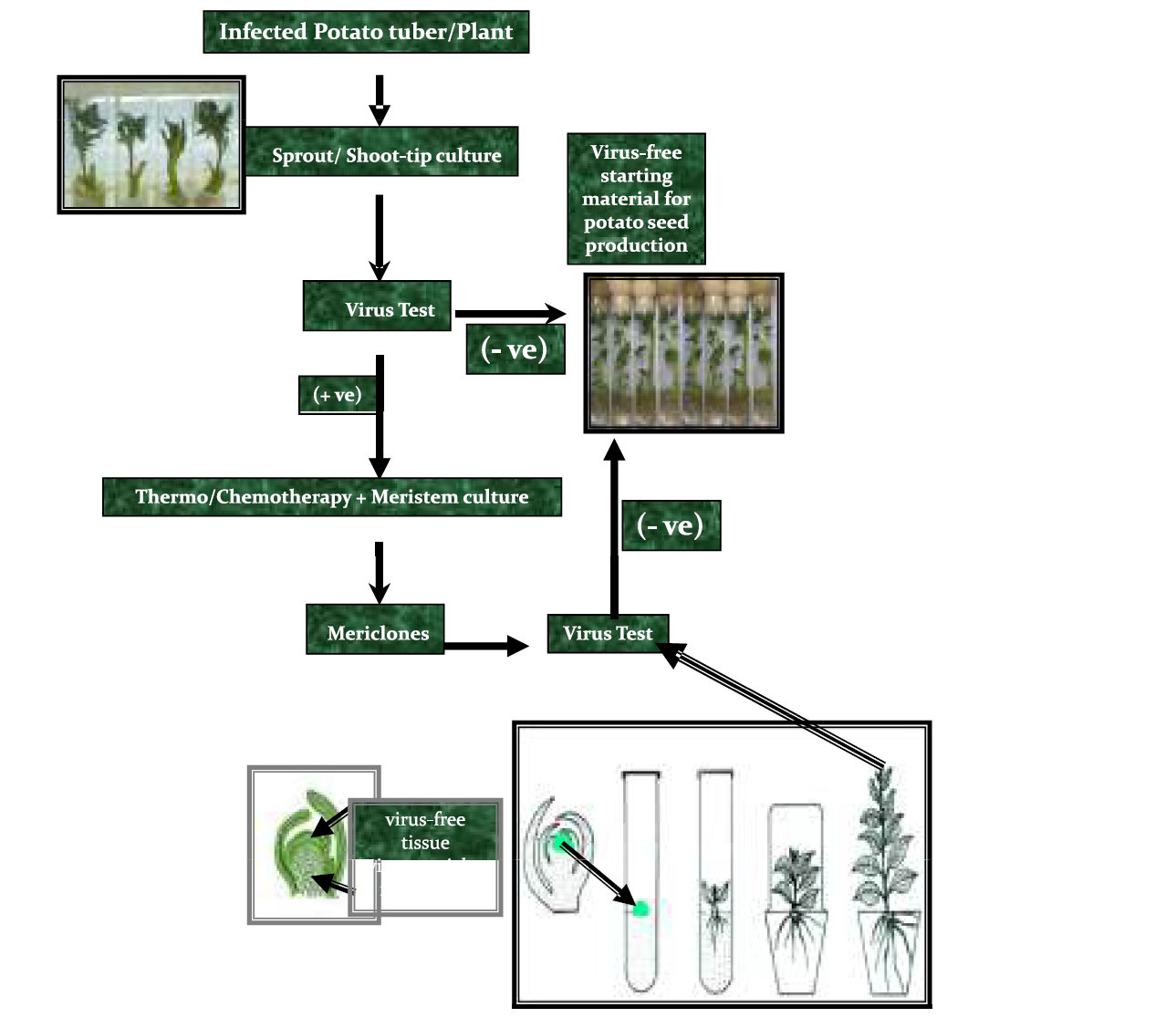Meristem Culture
-
Meristem Culture
-
Viruses are systemic pathogens, and therefore, perpetuate through seed
tubers. Thus, the losses caused by viral diseases are not only confined to the year when infection occurs, but continue as long as the diseased tubers are used as seed. While plants infected with bacteria and fungi respond to treatments with bactericidal and fungicidal compounds, there is no commercially available treatment to protect virus-infected plants. Being dependent on host for DNA replication and protein synthesis, selective interference of viral multiplication by chemical means without adversely affecting the plant nucleic acid and protein synthesis is almost impossible. The term 'meristem culture' denotes in vitro culture of meristematic dome of actively dividing cells located at the extreme growing tip of the shoot is called as “apical meristem” and if it is located at axillary bud means it is called as “axillary meristem”, along with a portion of the subjacent tissue containing one or two leaf primordia. This piece of tissue is about 0.1-0.3 mm in size. The production of pathogen-free mother plants is achieved by tissue culture. Elimination of viruses by meristem excision and culture is a rather old practice; it is based on the fact that not all cells from an infected plant carry the virus and in rapidly growing meristematic tips viruses are either absent or their concentration is very low. Meristematic tissue from roots and sprouts may be virus-free. Despite the phenomenal success of meristem culture in elimination of plant viruses, it remains still unclear as to why the apical/axillary meristems contain a little or no virus? There are several hypotheses. Some of these are given below:-
Lack of true vascular tissue in this part of the plant. Most viruses translocate efficiently inside a plant through the phloem or by passage from cell to cell through plasmodesmata. Since cell-to-cell movement is slow, the concentration front of a virus is slowed in rapidly dividing tissue.
-
High metabolic activity in the meristematic tissue. Because viruses replicate using the metabolic process of the host, they find it difficult to compete with this high metabolic activity.
-
Chromosome replication during mitosis and high auxin content
in the meristem may inhibit virus multiplication through interference with viral nucleic acid metabolism.
-
Existence of virus-inactivating systems with greater activity in the
apical region than elsewhere.
-
-
Meristem excision and culture
-
Excise the meristems (terminal as well as axillary) from in vitro derived node segments under a stereoscopic zoom microscope (inside laminar flow) using scalpel and needle to peel away protective leaves on buds. Use a drop of sterile distilled H O to 2 avoid meristem desiccation during excision.
-
Trim the meristematic dome plus one set of leaf primordia with a scalpel to 0.1- 0.2 mm.
-
Place the excised meristem on meristem medium in a culture tube (1 meristem/culture tube), and incubate the cultures under a 16 h photoperiod (approx. 50-60 μmol m-2 s-l light intensity) at 24°C.
-
The meristem medium is based on MS basal nutrients supplemented with 8.39 μM D-calcium pantothenate, 1.44 μM GA3, 0.054 μM NAA and 30 gl-1 sucrose, and solidified with 6.0 gl- 1 agar.
-
Test meristem derived plantlets for viruses by ELISA and/or ISEM.
-
Multiply and maintain virus-negative meristem-derived clones by shoot cultures in vitro.

-
Fig. 3 Virus elimination Techniques
-